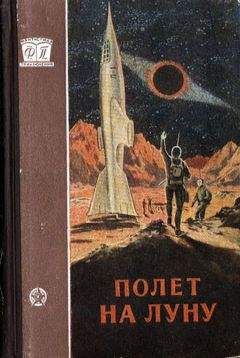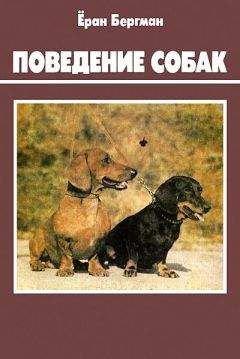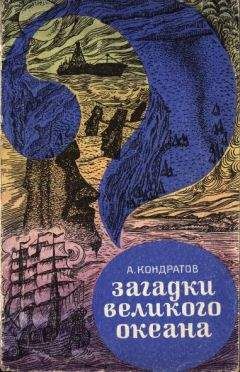Как живые: Двуногие змеи, акулы-зомби и другие исчезнувшие животные - Журавлёв Андрей Юрьевич
Главное же заключается в том, что любой из героев книги – это ходячая (плавающая или летающая) энциклопедия эволюции, «прочитав» которую мы можем узнать, как она происходит, куда заставляет двигаться, что из этого проистекает для конкретных видов, целых групп животных и всех обитателей планеты, вместе взятых.

Рис. 28. Эволюционная лестница существ, представленных в этой книге: жирным шрифтом выделены систематические группы, к которым принадлежат персонажи, а те группы, что существуют и ныне, подчеркнуты (Schoch, 2014; Arratia, 2015; Brazeau, Friedman, 2015; Schoch, Sues, 2015; Dupret et al., 2017; Coates et al., 2018; Simões et al., 2018; Hu et al., 2019; Cloutier et al., 2020; Brocklehurst, Benson, 2021; Martínez et al., 2021; Simões, Pyron, 2021; Pritchard et al., 2021; Gai et al., 2022; Tian et al., 2022; Wolniewicz et al. 2023; Wu et al., 2023)
Избранная библиография
Часть I. Рыбные дни
Грэй Дж. Передвижение животных. – М.; Ижевск: Ижевский институт компьютерных исследований, 2011.
Дзержинский Ф. Я. Сравнительная анатомия позвоночных животных. – М.: Аспект-Пресс, 2005.
Новицкая Л. И. Предшественники рыб, бесчелюстные – начало пути к человеку. – М.: ГЕОС, 2015.
Aguilera O. A., García L., Cozzuol M. A. Giant-toothed shark white sharks and cetacean trophic interaction from the Pliocene Caribbean Paraguaná Formation. Paläontologische Zeitschrift, 2008, 82, 204–8.
Aldridge R. J., ed. Palaeobiology of Conodonts. – Chichester: Ellis Horwood Ltd., 1987.
Aldridge R. J., Briggs D. E. G., Smith M. P., Clarkson E. N. K., Clark N. D. L. The anatomy of conodonts. Philosophical Transactions of the Royal Society of London B, 1993, 340, 405–21.
Aldridge R. J., Gabbott S. E., Siveter L. J., Theron J. N. Bromalites of the Soom Shale Lagerstätte (Upper Ordovician) of South Africa: Palaeoecological and palaeobiological implications. Palaeontology, 2006, 49, 857–71.
Anderson P. S. L., Westneat M. W. Feeding mechanics and bite force modelling of the skull of Dunkleosteus terrelli, an ancient apex predator. Biology Letters, 2007, 3, 76–9.
Arratia G. Complexities of early Teleostei and the evolution of particular morphological structures through time. Copeia, 2015, 103, 999–1025.
Balter V. et al. Calcium stable isotopes place Devonian conodonts as first level consumers. Geochemical Perspectives Letters, 2019, 10, 36–9.
Boessenecker R. W. et al. The Early Pliocene extinction of the mega-toothed shark Otodus megalodon: a view from the eastern North Pacific. PeerJ, 2019, 7, e6088.
Brazeau M. D., Friedman M. The origin and early phylogenetic history of jawed vertebrates. Nature, 2015, 520, 490–7.
Brazeau M. D. et al. Fossil evidence for a pharyngeal origin of the vertebrate pectoral girdle. Nature, 2023, 623, 550–4.
Briggs D. E. G., Clarkson E. N. K., Aldridge R. J. The conodont animal. Lethaia, 1983, 16, 1–14.
Brito P. M. Révision des Aspidorhynchidae (Pisces, Actinopterygii) du Mésozoїque: ostéologie, relations phylogénétiques, donnés environnementales et biogéographiques. Geodiversitas, 1997, 19, 681–772.
Brito P. M., Meunier F. J. The morphology and histology of the scales of Aspidorhynchidae (Actinopterygii, Halecostomi). Geobios, 2000, 33, 105–11.
Brown F. D., Prendergast A., Swalla B. J. Man is but a worm: Chordate origins. Genesis, 2008, 46, 605–13.
Bruet B. J. F., Song J., Boyce M. C., Ortiz C. Materials design principles of ancient fish armour. Nature Materials, 2008, 7, 748–56.
Chang M.-m., Wu F., Miao D., Zhang J. Discovery of fossil lamprey larva from the Lower Cretaceous reveals its three-phase life cycle. Proceedings of the National Academy of Sciences of the USA, 2014, 111, 15486–90.
Chen J.-Y., Dzik J., Edgecombe G. D., Ramsköld L., Zhou G.-Q. A possible Early Cambrian chordate. Nature, 1995, 377, P. 720–72.
Coatham S. J., Vinther J., Rayfield E. J., Klug C. Was the Devonian placoderm Titanichthys a suspension feeder? Royal Society Open Science, 2020, 7, 200272.
Coates M. I., Sequeira S. E. K., Sansom I. J., Smith M. M. Spines and tissues of ancient sharks. Nature, 1998, 396, 729–30.
Coates M. I. et al. An early chondrichthyan and the evolutionary assembly of a shark body plan. Proceedings of the Royal Society of London B, 2018, 285, 20172418.
Collareta A. et al. Did the giant shark Carcharocles megalodon target small prey? Bite marks on marine mammal remains from the late Miocene of Peru. Palaeogeography, Palaeoclimatology, Palaeoecology, 2017, 469, 84–91.
Condamine F. L., Romieu J., Guinot G. Climate cooling and clade competition likely drove the decline of lamniform sharks. Proceedings of the National Academy of Sciences of the USA, 2019, 116, 20584–90.
Conway Morris S., Caron J.-B. Pikaia gracilens Walcott, a stem-group chordate from the Middle Cambrian of British Columbia. Biological Reviews, 2012, 87, 480–512.
Cooper J. A., Pimiento C., Ferrón H. G., Benton M. J. Body dimensions of the extinct giant shark Otodus megalodon: a 2D reconstruction. Scientific Reports, 2020, 10, 14596.
Cooper J. A. et al. The extinct shark Otodus megalodon was a transoceanic superpredator: Inference from 3D modeling. Science Advances, 2022, 8 (33), eabm9424.
Dearden R. P., Stockey C., Brazeau M. D. The pharynx of the stem-chondrichthyan Ptomacanthus and the early evolution of the gnathostome gill skeleton. Nature Communications, 2019, 10, 2050.
Dec M. Hydrodynamic performance of psammosteids: New insights from computational fluid dynamics simulations. Acta Palaeontologica Polonica, 2019, 64, 679–84.
Donoghue P. C. J. Microstructural variation in conodont enamel is a functional adaptation. Proceedings of the Royal Society of London B, 2001, 268, 1691–8.
Donoghue P. C. J., Keating J. N. Early vertebrate evolution. Palaeontology, 2014, 57, 879–93.
Donoghue P. C. J., Purnell M. A. Mammal-like occlusions in conodonts. Paleobiology, 1999, 25, 58–74.
Donoghue P. C. J., Rücklin M. The ins and outs of the evolutionary origin of teeth. Evolution & Development, 2016, 18, 19–30.
Donoghue P. C. J., Forey P. L., Aldridge R. J. Conodont affinity and chordate phylogeny. Biological Reviews, 2000, 75, 191–251.
Donoghue P. C. J., Sansom I. J., Downs J. P. Early evolution of vertebrate skeletal tissues and cellular interactions, and the canalization of skeletal development. Journal of Experimental Zoology B (Molecular and Developmental Evolution), 2006, 306B, 1–17.
Dzik J. Yunnanozoon and the ancestry of chordates. Acta Palaeontologica Polonica, 1995, 40, 341–60.
Dupret V., Sanchez S., Goujet D., Tafforeau P., Ahlberg P. E. Bone vascularization and growth in placoderms (Vertebrata): The example of the premedian plate of Romundina stellina Ørvig, 1975. Comptes Rendus Palevol, 2010, 9, 369–11.
Dupret V., Sanchez S., Goujet D., Tafforeau P., Ahlberg P. E. A primitive placoderm sheds light on the origin of the jawed vertebrate face. Nature, 2014, 507, 500–3.
Dupret V., Sanchez S., Goujet D., Ahlberg P. E. The internal cranium anatomy of Romundina stellina Ørvig, 1975 (Vertebrata, Placodermi, Acanthothoraci) and the origin of jawed vertebrates – Anatomical atlas of a primitive gnathostome. PLoS ONE, 2017, 12 (2), e0171241.
Ebert M., Kölbl-Ebert M. Morphology of the leading edges of the caudal and other unpaired fins in Late Jurassic Aspidorhynchidae and some other actinopterygian fish in light of their function. Archaeopteryx, 2010, 28, 1–22.




